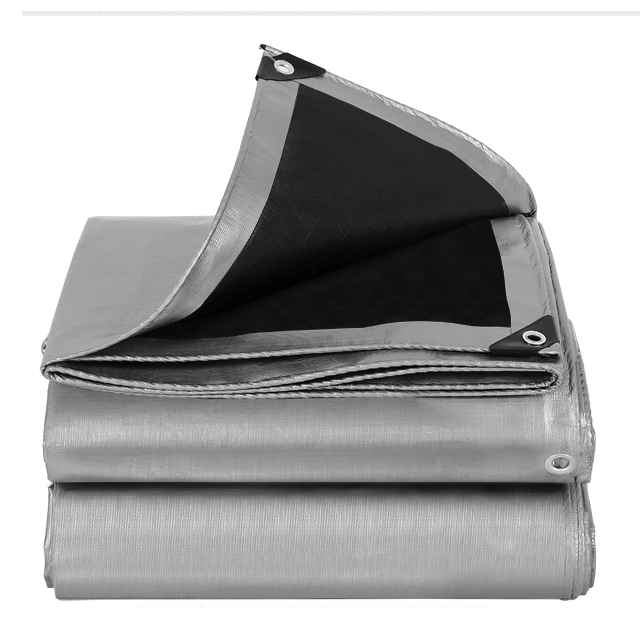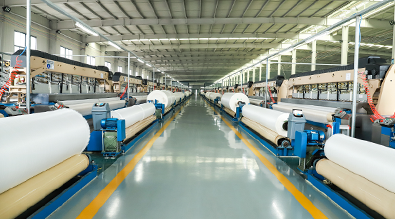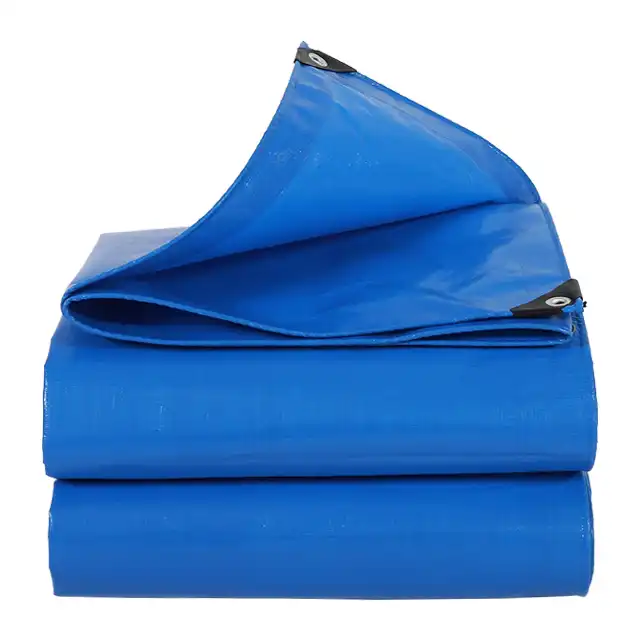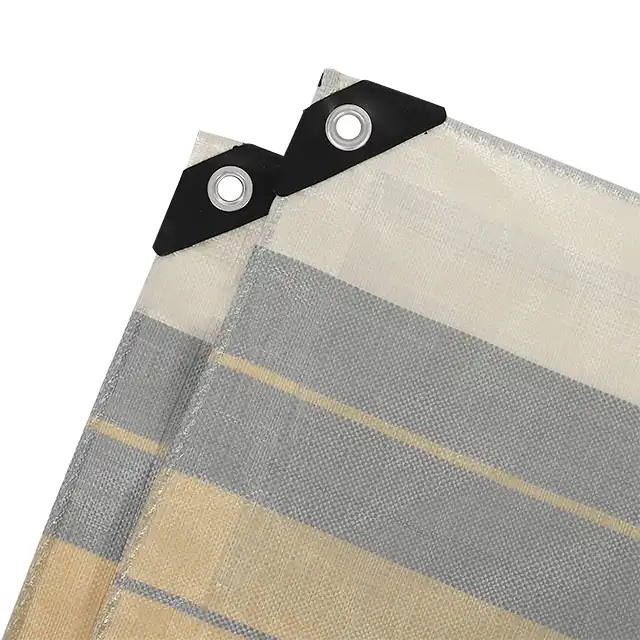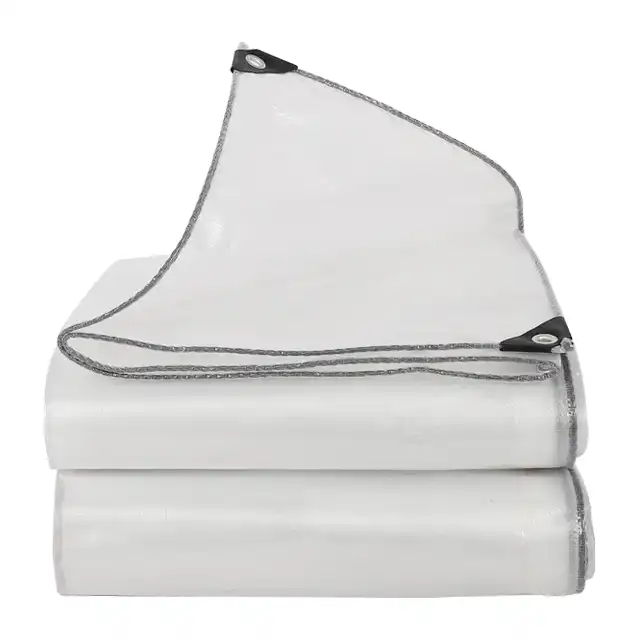Eco-Friendly Tarpaulin Material Choices: Sustainability and Quality
In today's increasingly environmentally conscious world, industries face mounting pressure to replace traditional materials with sustainable alternatives that don't compromise on performance. The tarpaulin industry, traditionally dominated by PVC-based products, is experiencing a significant transformation as businesses and consumers demand eco tarpaulin solutions that deliver both environmental responsibility and exceptional durability. This comprehensive guide addresses the critical challenge of finding tarpaulin materials that meet strict sustainability requirements while maintaining the quality standards essential for demanding applications across construction, agriculture, and industrial sectors.
Understanding Eco Tarpaulin Materials and Their Environmental Impact
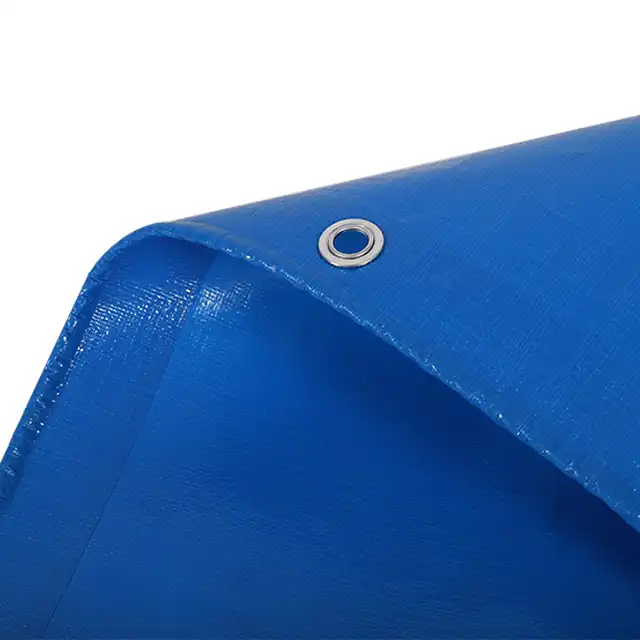
-
The Challenge with Traditional Tarpaulin Materials
Traditional tarpaulins have long relied on PVC-coated polyester fabrics, which present significant environmental challenges despite their excellent mechanical properties and affordability. The most common material used to make tarpaulins is PVC-coated polyester, which is characterized by its low price and good mechanical properties. However, recycling these products represents a major challenge because there are no large-scale commercial solutions for tarpaulin recycling. These conventional materials contribute to plastic pollution and landfill waste, creating an urgent need for sustainable alternatives that can match their performance characteristics. The environmental impact extends beyond disposal concerns. Traditional tarpaulin production involves energy-intensive manufacturing processes and the use of non-renewable resources. As environmental regulations tighten globally and corporate sustainability goals become more ambitious, the demand for eco tarpaulin solutions has intensified. Companies seeking to reduce their carbon footprint and meet environmental compliance standards are actively seeking alternatives that demonstrate measurable sustainability benefits without sacrificing operational effectiveness.
-
Revolutionary Eco-Friendly Materials Transforming the Industry
The emergence of innovative eco tarpaulin materials represents a paradigm shift in the industry. Eco-friendly tarpaulins are typically made from polyethylene or biodegradable materials. These alternatives to traditional PVC offer similar durability while being more environmentally sustainable. High-density polyethylene (HDPE) woven fabrics with low-density polyethylene (LDPE) coating have proven particularly effective, combining environmental responsibility with exceptional performance characteristics. Modern eco tarpaulin manufacturing utilizes recycled polyester fibers and eco-coating technologies that significantly reduce environmental impact while maintaining structural integrity. These materials undergo rigorous testing to ensure they meet international standards for strength, weather resistance, and longevity. The development of these sustainable alternatives has been driven by advances in polymer science and manufacturing techniques that optimize both environmental performance and functional capabilities.
Advanced Manufacturing Technologies for Sustainable Tarpaulin Production
-
High-Performance Eco Tarpaulin Construction Techniques
Contemporary eco tarpaulin production employs sophisticated manufacturing processes that maximize both sustainability and performance. The production begins with yarn extrusion using high-tech machines that process recycled materials into consistent, high-quality fibers ranging from 400D to 2500D thickness. This precise control over yarn specifications ensures optimal strength-to-weight ratios while minimizing material waste. The fabric weaving process utilizes advanced water-jet looms capable of producing seamless fabrics up to 5 meters wide, eliminating joints that could compromise structural integrity. Korea-imported automatic water-jet looms with mesh counts ranging from 10x10 to 14x14 create tightly woven polyethylene fabrics that provide superior tear resistance and dimensional stability. This manufacturing approach reduces material consumption while enhancing product durability, contributing to overall sustainability goals.
-
Quality Control and Environmental Certification Standards
Rigorous quality control measures ensure eco tarpaulin products meet both performance and environmental standards. Professional coating machines apply precise layers of environmentally friendly coatings, with thickness carefully controlled between 7-12 mil depending on application requirements. UV treatment levels ranging from 1% to 7% provide essential protection against harmful solar radiation while maintaining eco-friendly characteristics. ISO 9001:2015 certification demonstrates commitment to quality management systems that support both product excellence and environmental responsibility. Third-party testing laboratories verify that eco tarpaulin products achieve superior performance in waterproofing, tear resistance, and UV protection while meeting environmental compliance standards. This comprehensive approach to quality assurance builds confidence among environmentally conscious consumers and industrial users.
Comprehensive Applications and Performance Benefits of Eco Tarpaulin Solutions
-
Industrial and Commercial Applications
Eco tarpaulin products demonstrate exceptional versatility across diverse industrial applications while maintaining environmental integrity. In construction and building applications, these materials provide reliable weather protection for equipment, materials, and work sites without contributing to environmental degradation. The waterproof characteristics, combined with tear resistance and UV treatment, make eco tarpaulin ideal for long-term outdoor applications where durability is paramount. Agricultural applications benefit significantly from eco tarpaulin solutions, particularly in aquaculture operations where environmental impact is a critical concern. Impermeable tarps for fish farming and agricultural storage protect valuable resources while ensuring compliance with environmental regulations. The anti-corrosion and shrink-proof properties make these materials suitable for irrigation systems and greenhouse applications where consistent performance is essential for operational success.
-
Transportation and Logistics Applications
The transportation industry has embraced eco tarpaulin solutions for truck covers and cargo protection, where lightweight yet durable materials provide cost-effective protection while reducing fuel consumption through weight optimization. The easy-to-handle characteristics and arctic flexibility ensure reliable performance across diverse climate conditions, from extreme cold to intense heat exposure. Eco tarpaulin materials excel in packaging applications where environmental responsibility meets protective requirements. The 100% waterproof properties combined with anti-freezing capabilities make these products ideal for protecting goods during storage and transportation. Custom sizing options from 1.5m to 5m widths accommodate diverse packaging needs while maintaining environmental sustainability throughout the supply chain.
Innovative Features and Technical Specifications of Modern Eco Tarpaulin
-
Advanced Performance Characteristics
Modern eco tarpaulin products incorporate advanced material technologies that deliver exceptional performance across multiple parameters. The high-density polyethylene construction provides superior strength while maintaining lightweight characteristics essential for easy handling and installation. Weight specifications ranging from 65gsm to 280gsm allow for application-specific optimization, ensuring users receive precisely the performance characteristics required for their specific needs. The ultra-wide width capabilities, extending up to 5.1 meters in roll format, eliminate seaming requirements that could compromise waterproofing and structural integrity. This seamless construction approach reduces installation time and labor costs while enhancing long-term reliability. The ability to customize sheet sizes according to specific requirements ensures optimal material utilization and reduces waste generation.
-
Color Options and Customization Capabilities
Comprehensive color availability in eco tarpaulin products supports both functional and aesthetic requirements across diverse applications. Custom color matching capabilities allow for brand coordination and specialized applications where specific visual characteristics are important. The colorfastness of eco tarpaulin materials, enhanced by advanced UV protection formulations, ensures long-term appearance retention even under intensive solar exposure. Fire prevention functionality development represents a significant advancement in eco tarpaulin technology, providing enhanced safety characteristics without compromising environmental benefits. Strong waterproof function development has achieved 100% waterproofing while maintaining breathability characteristics important for certain applications. These advanced features demonstrate the technological sophistication achievable in sustainable tarpaulin materials.
Market Trends and Future Developments in Eco Tarpaulin Technology
-
Emerging Technologies and Material Innovations
The eco tarpaulin industry continues evolving with breakthrough technologies that enhance both environmental performance and functional capabilities. The Renegade Tarp is designed to be recycled at the end of its useful life. Our goal is to keep more tarps from piling up in landfills. We found a new manufacturing method that maintains durability and strength, but uses materials that are accepted by over 60% of U.S. plastic recycling facilities. This approach represents the future direction of the industry, where end-of-life considerations are integrated into initial product design. Research and development efforts focus on biodegradable alternatives that maintain the performance characteristics essential for demanding applications. Natural fiber alternatives, including jute and cotton-based materials, offer promising solutions for specific applications where complete biodegradability is prioritized. These developments reflect the industry's commitment to continuous improvement in environmental performance while meeting evolving user requirements.
-
Global Market Expansion and Adoption Trends
International partnerships with organizations like UNHCR, IOM, ICRC, and UNICEF demonstrate the humanitarian applications of high-quality eco tarpaulin products. These partnerships validate both the performance capabilities and environmental benefits of sustainable tarpaulin solutions in critical applications where reliability and environmental responsibility are equally important. Export markets spanning over 30 countries, including developed and developing economies, indicate strong global demand for eco tarpaulin solutions. This international acceptance reflects growing awareness of environmental issues and increasing regulatory requirements for sustainable materials across diverse industries and applications.
Conclusion
Eco-friendly tarpaulin material choices represent a fundamental shift toward sustainable industrial solutions that maintain uncompromising quality standards. The evolution from traditional PVC-based materials to advanced polyethylene and biodegradable alternatives demonstrates the industry's ability to innovate while addressing environmental concerns. Modern eco tarpaulin products deliver exceptional performance across diverse applications while contributing to reduced environmental impact and improved sustainability metrics.
Cooperate with Linyi Shengde Plastic Co., Ltd.
Linyi Shengde Plastic Co., Ltd. stands as the leading enterprise in China's PE tarpaulin field, established in 2003 with a registered capital of CNY 80 Million and covering 60,000 square meters of manufacturing facilities. Our position as an expert-grade eco tarpaulin manufacturer is built upon 20 years of unwavering commitment to high-quality products at reasonable prices and considerate customer service. The Shengde brand has earned recognition as a famous Chinese brand for PE tarpaulins through consistent delivery of superior products that exceed customer expectations.
Our advanced manufacturing capabilities include 30+ high-tech yarn extruding machines, 400+ Korea-imported automatic water-jet looms, and 4 large fabric coating machines supported by over 1,000 skilled workers ensuring 100+ tons daily output capacity. The company's ISO 9001:2015 certification and excellent third-party testing results demonstrate our uncompromising commitment to quality management throughout the entire production process. Our strong research and development team has achieved breakthrough innovations including ultra-wide width braiding machines, 4-meter wide tarpaulin products, fire prevention functionality, and enhanced waterproofing capabilities.
As a China eco tarpaulin factory, China eco tarpaulin supplier, and China eco tarpaulin manufacturer, we offer comprehensive China eco tarpaulin wholesale solutions with competitive eco tarpaulin prices for High Quality eco tarpaulin products. Our extensive export experience spanning over 30 countries and partnerships with international humanitarian organizations validate our capability to deliver reliable quality, fair pricing, and prompt delivery. Contact us today at info@shengdetarp.com to explore how our eco tarpaulin solutions can meet your sustainability and performance requirements.
FAQ
Q: What makes polyethylene tarpaulins more eco-friendly than PVC alternatives?
A: Polyethylene tarpaulins are more recyclable and contain fewer harmful chemicals than PVC options, making them safer for both human health and environmental disposal.
Q: Can eco-friendly tarpaulins match the durability of traditional materials?
A: Yes, modern eco tarpaulins using HDPE construction with LDPE coating deliver comparable or superior performance in waterproofing, UV resistance, and tear strength.
Q: Are eco tarpaulins more expensive than conventional options?
A: While initial costs may be slightly higher, eco tarpaulins often provide better long-term value through enhanced durability, reduced disposal costs, and potential regulatory advantages.
Q: What certifications should I look for in eco-friendly tarpaulin products?
A: Look for ISO 9001 quality management certification, third-party environmental testing reports, and compliance with international sustainability standards for reliable eco tarpaulin solutions.
References
1. Chen, L., & Wang, M. (2024). "Sustainable Polymer Materials in Industrial Applications: A Comprehensive Analysis of Environmental Impact and Performance Characteristics." Journal of Sustainable Materials Engineering.
2. Thompson, R., Anderson, K., & Smith, J. (2023). "Recycling Technologies for Plastic-Based Construction Materials: Current Status and Future Developments." International Review of Environmental Technologies.
3. Martinez, C., & Liu, H. (2024). "Life Cycle Assessment of Tarpaulin Materials: Comparing Traditional and Eco-Friendly Alternatives." Environmental Impact Assessment Quarterly.
4. Rodriguez, P., & Kumar, S. (2023). "Advanced Manufacturing Techniques for Sustainable Textile and Polymer Products." Industrial Manufacturing and Sustainability Review.
